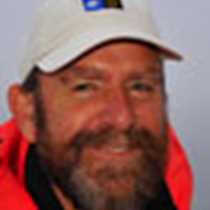Drake Passage
Flown in from all corners of the globe, we are a motley crew of adventurers bound for the most inhospitable continent on the planet. But for our first landfall, ironically we enjoyed the hospitality of the Argentinians of Buenos Aires. The city was named by the first Spanish seafarers, who gave thanks for safe landfall to their patron saint of mariners, Nuestra Señora Santa Maria de los Buenos Aires, St. Mary of the Fair Winds. As we took off yesterday from the domestic airport and headed south over the River Plate, we had a condor’s view of the city and the wide muddy mouth of this giant river which commemorates the Spanish search for riches: Rio de la Plata: River of Silver. Magellan even explored it to see if it led to the Pacific. The only silver visible yesterday was sunlight glancing off the tower blocks.
At Ushuaia, we had a brief foray out into the Beagle Channel by catamaran and crept in close to islands covered in breeding rock and king shags, with attendant kelp and dolphin gulls, and came right alongside a massive brown male South American sea lion, slumbering on a rock, oblivious to the racket of gulls and cormorants around him. Then we docked within walking distance of our passport to adventure, the expedition ship National Geographic Explorer, and suddenly our anticipated voyage became real. Within an hour we had cast off and were steaming east down the Beagle Channel, a reminder of the heroes and their ships which have sailed these waters before us.
Today we wake to find ourselves at sea. There has been time to attend a fine talk by Stefan on the wandering albatross, as the real thing glided past the windows outside. Later we learned how to make best use of our cameras, and went straight out on deck to put new skills into action to capture wheeling seabirds over a bright, lively sea.
We are in that notorious stretch of southern ocean, the Drake Passage, named after the feisty Devon sea-captain Francis Drake who, blown south by a winter gale in 1577, discovered that beyond the tip of South America there was nothing but open ocean. Here the southern gyre of the Pacific powers through the narrow 600-mile-wide gap at four knots, stirred up by deep westerly lows that pass constantly, and riled further by contrary winds and currents. It is time to pray once again to Santa Maria for Buenos Aires. Perhaps our anxieties have been answered, for though the wind is blowing a lively 30 knots, it is astern, driving us south towards our own adventures beyond the dreams of Magellan, Drake and beagle-eyed Darwin.




